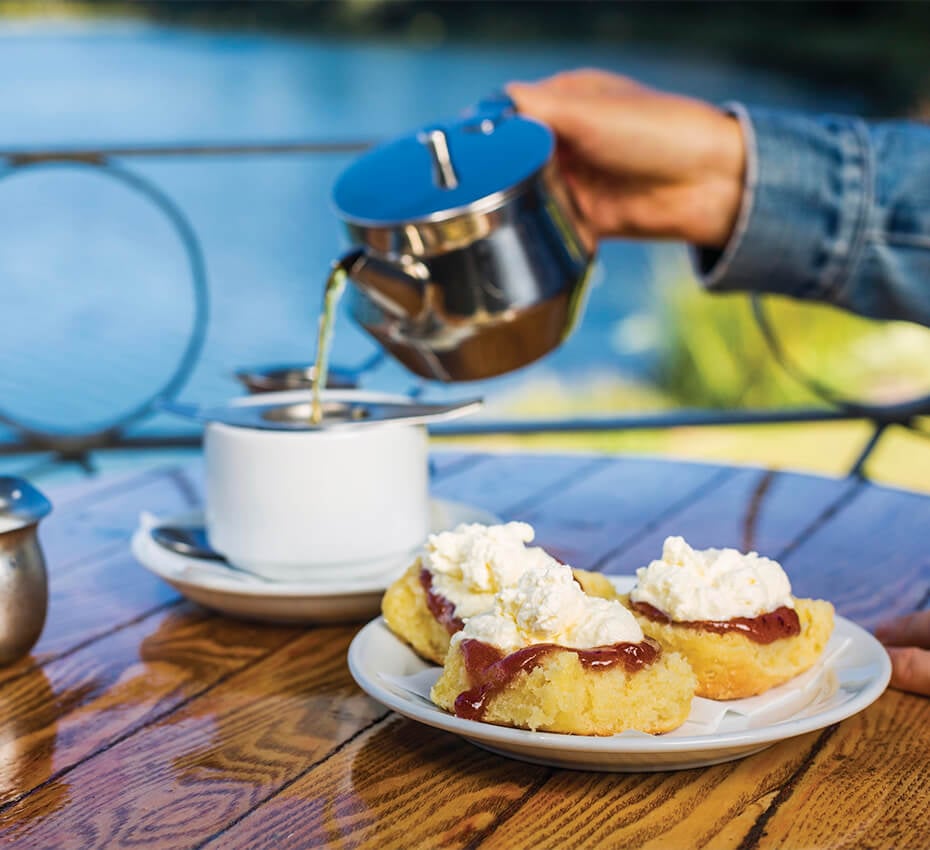TNQ Writer
Prepare for your mind to be blown (pun intended) as you uncover just how extensive Tropical North Queensland’s volcanic history is. Explore lava tubes, swim in ancient craters, and even sleep in luxury on the rim of an extinct volcano.
What if we told you that Tropical North Queensland has hundreds of volcanoes? Many of them you may have driven past and not even realised!
This list focuses on the easily accessible and merely scratches the surface of their stories – to dig deeper, we’re talking magma levels, we’ve linked a couple of scientific papers throughout that knowledge-seekers may find interesting. And, before you panic, the region is considered dormant, so there is very little chance you’ll blown away, other than metaphorically.
Undara Volcanic National Park

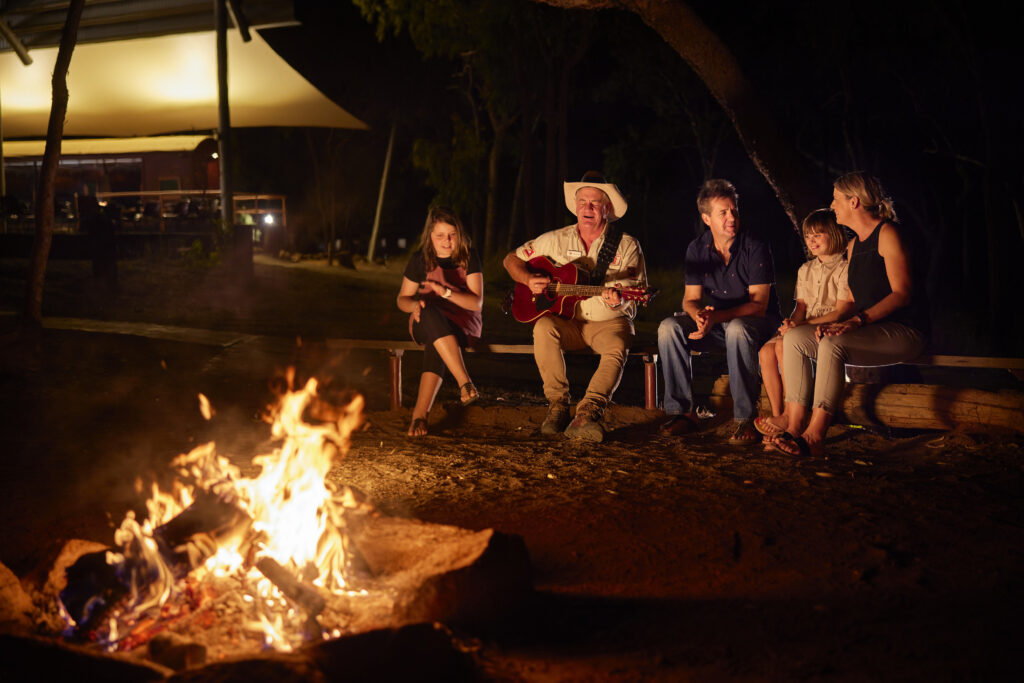

Ok, ok… This one is a little obvious with “volcanic” literally in its name, so it seems a logical place to start. This national park is famous for the remarkable network of Undara Lava Tubes, which are some of the world’s longest examples and date back to an enormous volcanic eruption 190,000 years ago. It is part of the broader McBride Volcanic Province, which boasts over 160 vents through its 5,500km². Check out this map of some of the “recent” lava flows including Undara, for a little more context of its significance.
Undara Experience operates daily excursions through the national park with highly-trained volcano nerds…. ahem, Savannah Guides. The tubes can only be accessed via guided-tour with a range of options available, from easy to moderate levels of fitness walking tours, wheelchair accessible tours, and evening wildlife-spotting tours timed to witness the emergence of thousands of micro-bats from the entrance of Barkers Cave.
Your volcanic adventure doesn’t end at lava tubes – Kalkani Crater is renowned as one of the area’s best sunset or sunrise vantage points. This 65m prominence pips Undara Crater (at only 40m) and is accessible to the public without a guide. It’s a Grade 3 2.5km-return trail, and from its rim, you can look down into its very own crater – a great place to spot Pretty Faced Wallabies – and out to even more volcanic craters on the horizon. When looking out from the rim, the darker green patches you can spot on the ground are collapsed sections of lava tubes, AKA the entrances to these underground tunnels.
Stay: Undara Experience offers a range of accommodation options from camping, pioneer huts and even rooms in converted railway carriages. You’ll also find a range of activities on site, including bush walks, campfire entertainment and unique dining.
Kinrara Crater



Kinrara Crater is part of the same McBride Volcanic Province as Undara, though is much younger – at somewhere in the realms of 7,000 to 10,000 years, it is considered one of Australia’s youngest volcanoes. Its eruption is thought to have been that described through Aboriginal verbal traditions of the Gugu Badhun People.
Kinrara Nature Reserve is an outback oasis. On the banks of a spectacular natural artesian lake lies MacEachern’s Camp, the landmark property for Kinrara Expeditions – a five day all-inclusive luxury adventure you’ll never want to leave.
Swap stories over dinner with the other guests and your hosts, with family-style gourmet dining at the heart of the main lodge. Retreat to your private glamping tent each night and wake up to birdsong before planning what the day ahead holds. From scenic helicopter flights over the crater, hiking trails, kayaking, waterfalls, wildlife spotting and even visiting the O’Brien family’s working cattle station, you can tailor your itinerary to suit you.
Miilla Miilla Falls

That’s right, Millaa Millaa Falls is situated on an ancient lava flow. Evidence of the volcanic activity is obvious to the trained eye but may go unnoticed if you’re not sure what to look for. One of the things that makes Millaa Millaa Falls so appealing is its columnar basalt foundations (more in depth info here). Basalt = a rock formed by cooled lava. Consider your eyes now trained!
Now you know what to look for you’ll start noticing this feature across many of the area’s waterfalls including the Ellinjaa and Zillie Falls along the same Waterfall Circuit, Mungalli Falls, Mena Creek Falls, Millstream Falls, and Nandroya Falls, to name a few.
Tip: Basalt waterfalls make for great long exposure photos. Learn how to shoot waterfalls from a local pro, or familiarise yourself with your phone settings, as many have the ability to take long exposures. On an iPhone, for example, it only takes a few seconds to convert a live photo to a long exposure, while on a Samsung you can control your shutterspeed in Pro Mode!
Atherton Tablelands
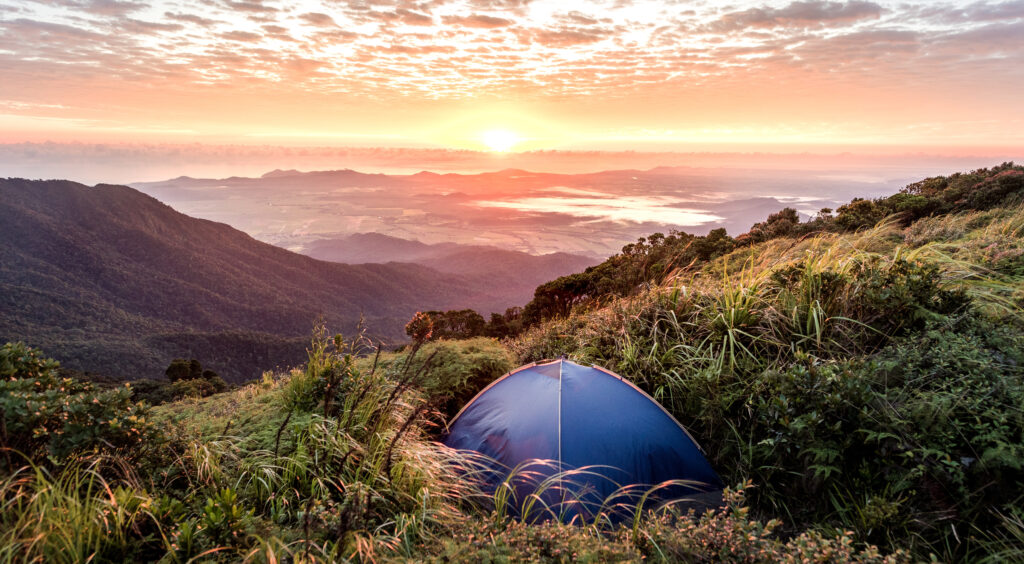


Continuing on your Atherton Tablelands journey, you may not have realised but a large chunk of the land you’ve been traversing through has been shaped by millions of years of volcanic activity. Take the Palmerston highway, for example – and you’ll be following a natural topographic pathway between two lava flows.
The fact that this area is so rich in basalt is one of the reasons it’s such a prolific farming industry, as the basalt-rich soils are well drained and have high fertility. Approximately 56% of the Atherton Tablelands rests on said soils, with the Atherton Basalt Province, covering an area of nearly 2,500km² and containing 65 eruptive centres from 54 localities, including small lava shields, fissures, cinder cones, maars, and one diatreme. Now you know why this is the food bowl of the north!
If your interest is piqued peaked (get it?), you can check out this scientific paper where you’ll find a list of the aforementioned volcanoes, diagrams and more in depth information about the region’s geology.
Otherwise, your quest for volcanoes continues below where we’ll uncover a few more of the highlights.
Crater Lakes National Park
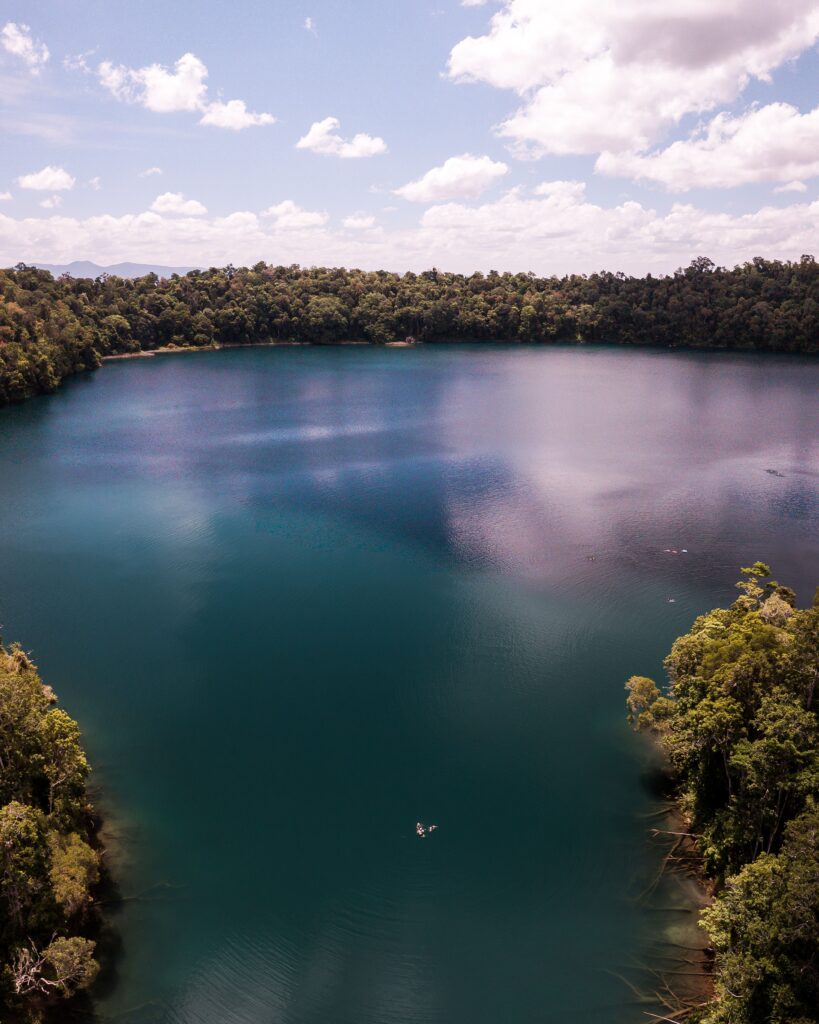


The name Crater Lakes National Park should have given you some inkling that these two lakes have a volcanic history. They are what are classified as maars, volcanic explosions triggered by groundwater coming into contact with lava or magma (AKA, a phreatomagmatic eruption). Maars are low-relief craters and typically fill up to create a crater lake, as evidenced by Lake Eacham and Lake Barrine.
These are some of youngest volcanic activity of the region, approximated to have formed between 17,000 (Lake Barrine) and 10,000 (Lake Eacham) years ago. Their nearby, lesser-known sister, Lake Euramoo, is a smaller but slightly older (at least 23,000 years-old) maar, formed by twin volcanic explosions resulting in its distinct dumbbell shape.
These lakes creation stories have been passed down through generations of the Ngadjonji Aboriginal People, whose ancestors may have witnessed their formations. Find interpretive signs at the lakes for more of their history – we don’t want to spoil it all for you now!
Now, how ‘bout a swim in a volcanic crater? Thankfully the water has cooled down since, tending towards the colder side even.
Mt Hypipamee Crater

Keeping with the crater lake theme, Mt Hypipamee Crater is the only example of a diatreme, or volcanic pipe, in Tropical North Queensland. It’s thought to have been created by a massive gas explosion breaking through the granite and resulting in a 70m wide, crater. This crater drops steeply down 58m before reaching a pool of water around 70m deep.
According to Queensland Parks, “Gas rose suddenly through a crack towards the earth’s surface and expanded as the surrounding pressure reduced (similar to a scuba diver’s bubbles becoming bigger as they rise to the water surface). A massive explosion erupted as the gas burst through to the surface, creating a deep cylindrical hole, or pipe, through the granite. The explosion hurled boulders and rocks into the air, but little volcanic material was produced.”
It’s hard to really imagine the perspective without seeing it in person, so this is definitely a spot to add to your itinerary. It’s also a common Lumholtz’s Tree Kangaroo hangout and is adjacent to Dinner Falls, what more could you want?
Mt Quincan

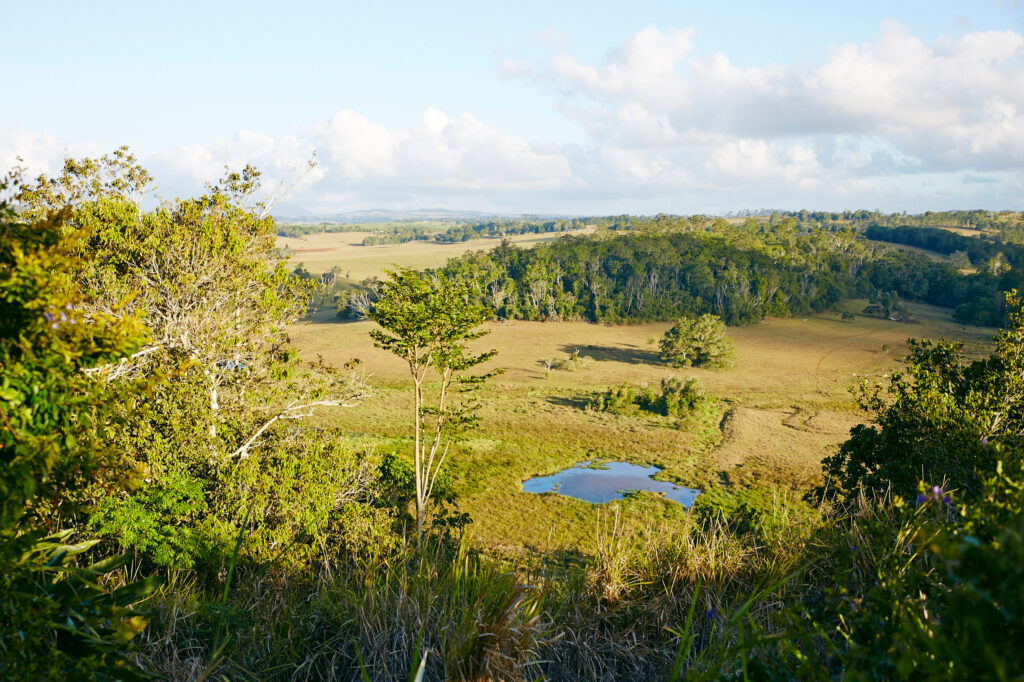

It’s time to get lava-ble! Romantic Mt Quincan Crater Retreat features secluded luxurious tree houses and a lodge perched on the rim of an extinct cinder cone volcano. It is at least 7,250 years old, based on dating from swamp deposits found within the crater. Each room has its own kitchen, spa bath and fireplace (the closest thing you’ll get to an active volcano here) and is strictly kid-free. Your abode encompasses views either overlooking the crater or out to the surrounding rolling hills of the tablelands including, you guessed it, even more volcanoes.
A few short kms away, you’ll find a group of 350,000-year-old cinder cones called the Seven Sisters, or The Pinnacles. These were formed by small vents spurting lava into the air. Spatters of lava rained down around the vents, creating the conical hills we see today. While these are located on private property and thus inaccessible to the public, they do make for a spectacular scenic drive, located along the Gillies Highway just outside of Yungaburra.
Hallorans Hill

Unint-erupt-ed (last pun, we promise) views to the Seven Sisters can also be found at Hallorans Hill, Atherton township’s very own shield volcano. It’s a popular walking trail for locals, climbing 55m over 1.4kms, or you can simply drive your car to the top. If you’re looking for a vantage point for sunset or sunrise, you may have just found it!
The soils of the hill differ to the surrounding lands and are more similar to Mt Quincan and the Seven Sisters, which suggest it they may be linked by a common volcanic source.


